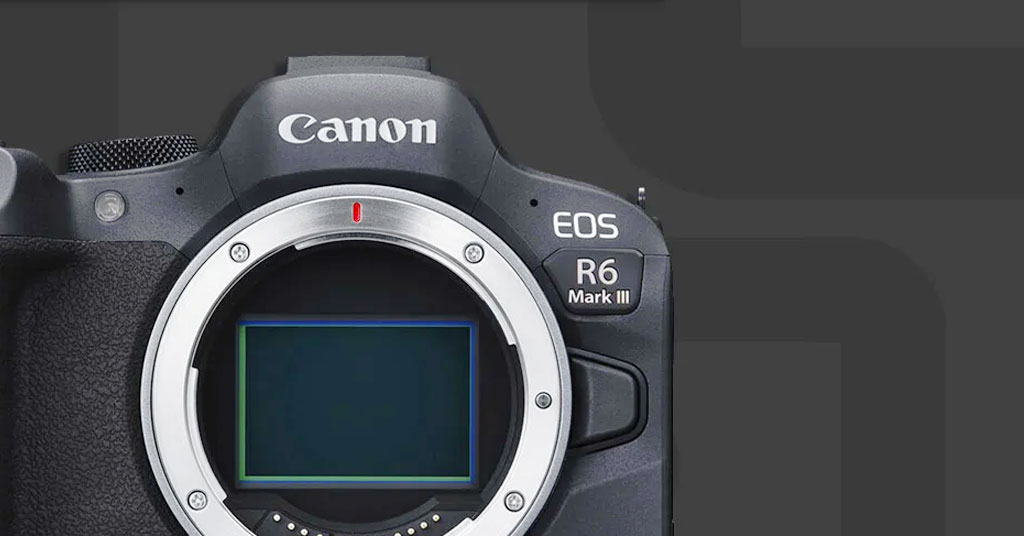Everyone is waiting for the Canon EOS R6 Mark III. It’s the follow-up to the very popular R6 Mark II, which became a top pick for photographers and videographers around the world.
The Canon EOS R6 Mark II won hearts because it was fast, sharp, and easy to use. It handled everything from weddings to wildlife with ease. Now, expectations are even higher for the Mark III.
In this article, we will dive into everything we know so far about the Canon EOS R6 Mark III. We’ll cover the new features, expected specs, release date, and how it stacks up against other big names.
Today’s Best EOS R6 Mark II Amazon Deal

Mason knows photography inside and out. With 15 years of hands-on experience, he’s written about cameras, lenses, and gear of all kinds. He even spent five years as a journalist, diving deep into music and writing sharp, engaging stories. Now, Mason shares his photography knowledge, helping readers find the right gear and perfect their skills. He’s also proud of his unbeatable Wordle streak!
Predicted Features of the Canon EOS R6 Mark III
Sensor and Image Quality
One of the biggest rumors is about the new sensor. The Canon EOS R6 Mark III is expected to have a 24-megapixel LC1720 stacked CMOS sensor. This is a big deal because it’s similar to the powerful sensor inside the Canon EOS R3.
A stacked sensor means faster readout. That helps when you shoot fast action, like sports or wildlife. It also means fewer problems like rolling shutter in videos. Canon is likely working hard to make the image quality even better. We expect improvements in:
- Dynamic range (How well the camera handles shadows and highlights)
- Color accuracy (How true the colors look)
- Low-light performance (Less noise in dark settings)
If these upgrades come true, photographers can expect richer colors, cleaner images, and sharper details even when the light isn’t perfect. Canon’s goal seems clear: give users pro-level image quality in a camera that feels friendly and fast.
Processor and Performance
The Canon EOS R6 Mark III is also rumored to feature a DIGIC Accelerator processor. This is big news!
The DIGIC Accelerator is designed to make the camera faster, smarter, and more powerful. It can handle bigger files, sharper videos, and quicker editing inside the camera.
One exciting feature tied to this processor is the 14-bit 30fps RAW electronic shutter shooting. Imagine capturing 30 full-quality RAW images every second! And it does this with a super quick reading speed of 1/180s.
This speed will make a huge difference for sports, wildlife, and action photographers. You’ll catch the perfect moment without any lag.
Overall, with a new processor and faster performance, the R6 Mark III promises to be a reliable camera for anyone who needs speed and quality working together.
Autofocus System
Canon is famous for making great autofocus systems. And it sounds like the R6 Mark III will keep that tradition alive. It is expected to inherit the autofocus system from the EOS R5 Mark II. That means:
- Faster focus lock
- Smarter subject tracking
- Better face, eye, and animal detection
For example, you can focus on a bird in flight or a kid running across a field, and the camera will track the subject smoothly without losing focus.
This makes the R6 Mark III an even better tool for real-world shooting, where things move fast and you don’t have time to mess with settings.
Video Capabilities
If you love making videos, the Canon EOS R6 Mark III looks very promising.It is expected to support XF-AVC S and XF-HEVC S recording formats. These are professional formats that keep video quality high while making file sizes manageable.
You will also be able to shoot:
- C4K/120p (Super 35mm) for super smooth slow-motion
- 6K oversampled C4K for extra-sharp 4K videos
That’s not all. The R6 Mark III will likely offer Cinema RAW Light recording at:
- 6K30p and
- 4K60p (Super 35mm)
Cinema RAW Light lets filmmakers capture all the details without needing massive file sizes. This makes the R6 Mark III a real option for both YouTubers and professional filmmakers. Canon seems to want this camera to be a true hybrid, amazing for photos and videos.
Build and Design
Good news for people who love flexible shooting: the Canon EOS R6 Mark III is rumored to have a multi-angle OLED screen. An OLED screen means brighter colors and better contrast. And a fully articulating design lets you flip the screen around — great for vlogging, selfies, or tricky shooting angles.
Another smart move from Canon is the dual card slots:
- One CFexpress Type B slot
- One SD UHS-II slot
CFexpress cards are super fast, perfect for high-speed shooting and big video files. SD cards are more affordable and easy to find. Having both gives users lots of options. The R6 Mark III should feel solid and professional, yet still light and easy to carry around.
Release Date and Pricing
According to the latest rumors, Canon plans to announce the EOS R6 Mark III in May 2025. If this timeline holds, we might see the camera start shipping a few months later, just in time for summer shoots and travel adventures. Of course, Canon could adjust the timeline depending on how final testing and production go. But May 2025 sounds like a safe bet for now.
While Canon has not yet shared an official price, most experts guess that the R6 Mark III will cost similar to the R6 Mark II at launch. That means you can expect a starting price of around $2,499 for the body only. Considering the new sensor, faster shooting, better autofocus, and stronger video features, that price would offer solid value for both serious enthusiasts and pros.
Competitor Comparison
Nikon Z6 III
The Nikon Z6 III is another exciting camera. It offers a 24.5-megapixel sensor and very strong video features, including 6K recording and fast frame rates. It’s built for photographers who want top photo quality and modern video tools in one body.
Comparison
While the Nikon Z6 III is strong, the Canon EOS R6 Mark III is expected to have some key advantages:
- Faster continuous shooting (up to 30fps)
- Smarter autofocus tracking, especially for moving subjects
- Cinema-grade video options with RAW Light
In short, the R6 Mark III might be the better choice for action shooters and hybrid creators who need both speed and flexibility.
Sony A7 IV
The Sony A7 IV is a favorite for good reason. It features a 33-megapixel sensor and 4K video recording. It’s very versatile, handling portraits, landscapes, and events with ease. Sony’s color science and autofocus are strong points too.
Comparison
The Canon R6 Mark III is expected to beat the A7 IV in a few areas:
- Higher continuous shooting speeds (Sony tops out lower)
- Newer autofocus tech that learns and tracks subjects faster
- 6K oversampling for sharper video footage
For photographers who prioritize speed, autofocus, and top video quality, the R6 Mark III could feel like a more dynamic and responsive camera.
Canon EOS R5 Mark II
The Canon EOS R5 Mark II is a powerhouse. It features a 45-megapixel sensor and 8K video recording. It’s aimed at professionals who need the absolute best in resolution and detail.
Comparison
While the R5 Mark II clearly wins in sheer resolution and 8K video, the R6 Mark III will likely be:
- More affordable
- Faster in shooting bursts
- Lighter and easier to carry around
For many users, especially those who don’t need 45 megapixels or 8K, the R6 Mark III could be the smarter and more budget-friendly choice.
Final Thoughts
The Canon EOS R6 Mark III is shaping up to be an exciting and important release. With a new stacked sensor, better processing, faster autofocus, and improved video features, it promises to be a major upgrade over the R6 Mark II.
This camera will likely appeal to:
- Professional photographers
- Videographers
- Serious enthusiasts who want pro-level quality without breaking the bank
If you are looking for a full-frame mirrorless camera that balances speed, power, and price, the Canon EOS R6 Mark III should be at the top of your list. It looks ready to deliver outstanding results in almost any shooting situation.


